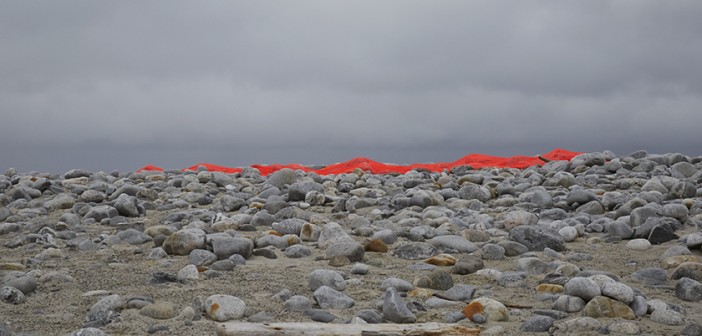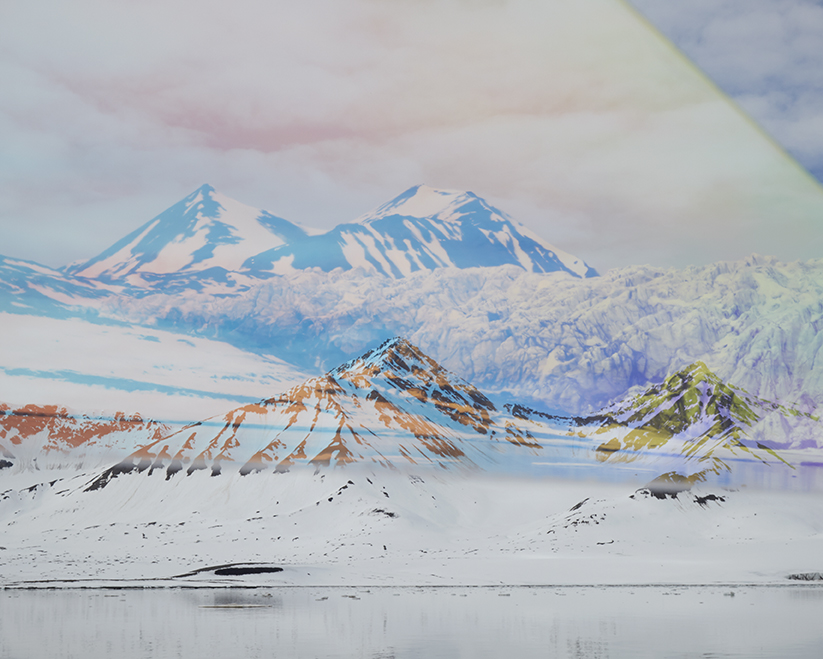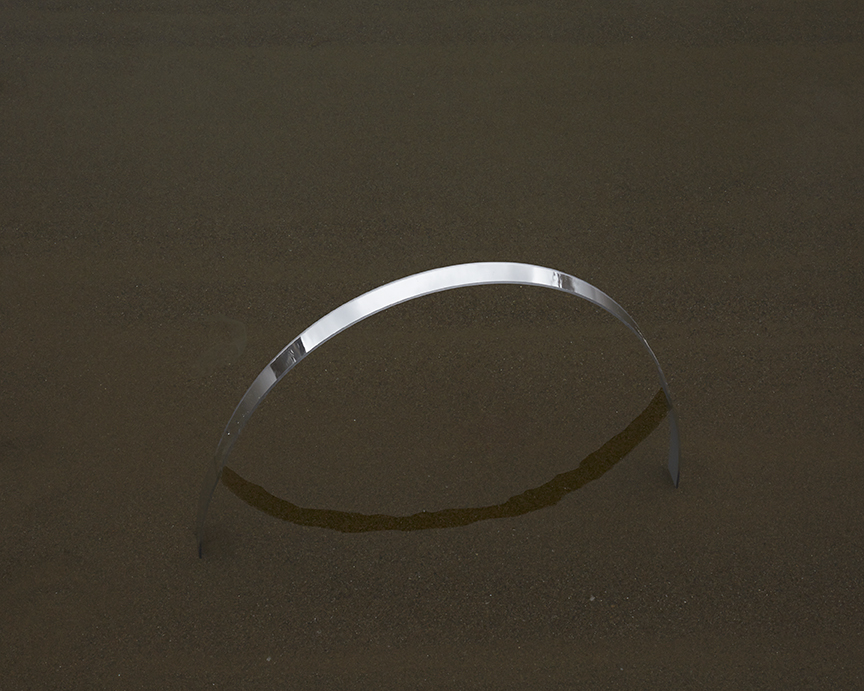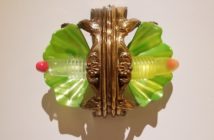Boston is a transient city. Each fall, legions of artists enroll in graduate programs throughout the city to nurture their talents and connections, and approximately two years later, many move on. While they are here, some of these artists are presented via exhibition or editorial to the city, and many inform and evolve the Boston art community. So why do so many leave? And how does the city affect their practice? In Elsewhere, we seek to reconnect with some of these former Boston artists, to discuss their reasons for leaving, and to see how their work subsequently progressed.
In our second installment, we spoke to Bahar Yurukoglu, who received her MFA from MassArt in 2011 now lives and works in Istanbul. While at MassArt, Yurukoglu’s work progressed from making photographic works to 3D works that explore the idea of space and representing space. We spoke to Yurukoglu about her work in 2014, and here, we discuss Boston and its borders (geographic, political, and economic), her work while in graduate school, how that work has evolved since leaving Boston, as well as the Istanbul art scene. Her work will be on view in Flow Through, a solo show opening March 23, 2016, at Arter in Istanbul.
Please describe your work before coming to Boston. What initially attracted you to study at MassArt? Will you talk about your move from 2D and photography towards 3D?
I was working as an editorial assistant, photographer, and printer in New York City before I decided to pursue my MFA at Massart because of the esteemed faculty; Laura McPhee, Abe Morrell, Barbara Bosworth, Nick Nixon, Matt Connors, Eirik Johnson (at the time). I entered the photography program but soon realized that I felt limited working in 2D. Having majored in photography as an undergraduate at SVA I was less interested in learning how to make a photograph and I realized I wanted build the world around me and make photographs from there instead of looking to the world for a photograph to make. I switched into the Interrelated Media program for my second year and began working in all mediums and dimensions.
What was your initial impression of the city? Describe the community you found in Boston and the New England area.
I’ve gone through many phases in my relationship with Boston. I appreciate the fact that it is a smaller city so the community is close but it has always felt like a city divided by economic and institutional borders, not to mention extremely spread out. While the city is politically liberal, it is culturally conservative. I still believe those things to be true, but by the time I left Boston (in June 2015), I realized that it is possible to cross those borders and step into several art worlds. It just requires a lot of effort to find out where things are and enormous time traveling from place to place. Lets face it, getting from Roslindale (where I lived and had a studio) to Somerville or East Boston can be challenging when you work and maintain a studio practice. It is doable and well worth it because the people are amazing, making great work and are so engaged with what’s happening in the world. There is a great respect and commitment to the arts and to each other in Boston. It was and still is an important part of my life and formative to my practice.
What type of work did you make while in school? What worked and didn’t work as you began making 3D work? Will you talk more about your exploration of salt as a medium? What succeeded in that pursuit, and why did you abandon that?
My work has always been about the photographic image and the translation of space between 3D / 2D. In graduate school, I spent a lot of time at a place called Dogtown in Gloucester. It was settled during colonial times before fishing became the main industry. I started making installations in the landscape there, by marking the dimensions of where the houses once stood and photographing these interventions. I am still very interested in abandoned utopias, and nature overtaking where humans once inhabited. Later I focused on pop culture and images, collecting tabloids from around the world as well working with 3D printing. Thinking about the way images are transmitted in media and the representation of images through medium. I worked with 3D design, scanning and printing to create a bust of myself as well as sculptures shaped like gold bricks but representing salt. Salt became a way to reference gold and oil both of which are highly consumed natural resources that represent an aspirational consumer driven market. In my research of salt, I discovered the rate of consumption and prices have increased at the same rate as oil since the 1950s. Salt is also an ingredient in the chemical compounds used to make plastics. Once I found plastic I felt I had found a material I could use to most efficiently express my concerns as an artist. A lot of the work I made in graduate school was about learning about dimensional space, the image, and articulating an abstract visual language. It is really about one step leading to the next until you find a good place to land instead of something not working.
You participated in many Boston-area shows as a student and after you graduated in 2011. Otherwise, did you feel supported by the local gallery scene here?
At a certain level I felt supported by the local galleries but not to the point that I felt I could sustain a long-term career as an artist there. I hold much gratitude for every opportunity I was given to show and create work in Boston.
When and why did you leave Boston?
I graduated MassArt in 2011 and left Boston in 2015. Basically the cost of living became too high and I was at a point where I needed to shake things up in my life and practice.
How has your work evolved since leaving Boston? What are you working on now?
I think a lot more about cultural and political issues now because I experience them first hand everyday. Seeing Syrian refugees on the streets of Istanbul and being in a society where freedom of speech and freedom of media are not the norm have absolutely impacted how I approach my work.
I went to artist residency in the Arctic Circle over the summer and have been working on the footage I collected there for a solo show based on the experience. This includes new videos, photographs, installation and sound. There is also a book being published with the exhibit.
The new work deals directly with notions of being displaced, transience and feeling uncomfortable and/or unwelcome in an environment.
Please describe the current art scene in Istanbul? Your installation “this place,” critical of contemporary Turkey, was well received earlier this year. However, a Hyperallergic article published in February discussed the interest in this place in context with a decline in public interest in art, and stated that the best place to show art is abroad. What’s your reaction to that idea?
The art scene in Istanbul is young and thriving, it is an exciting place to be. There are openings almost every week and if not openings then there are lectures, discussions, readings and other opportunities to be engaged with the arts. In addition to the private institutions and museums, there are several independent and artist run spaces that show and support local curators and artist. It’s a collaborative atmosphere, in many ways like Boston. I think the public interest in art is strong, particularly if there is something new to experience, like new media and installation.
For artists confronting political issues directly, particularly towards the government it isn’t a hospitable environment to work in, mostly out of fear that the government might one day turn to the arts in their next form of censorship. There are certainly artists and spaces operating in Istanbul who are critical of the current government, but I think for them there is a fear of not knowing when or if one day they will face persecution by the government for harboring an opinion. From oppression comes the opportunity to grow and along with a strong interest from the public, the art scene in Istanbul is alive and growing.
Have a question, comment, or suggestion about Elsewhere? Contact Leah Triplett Harrington at triplett@bigredandshiny.org






